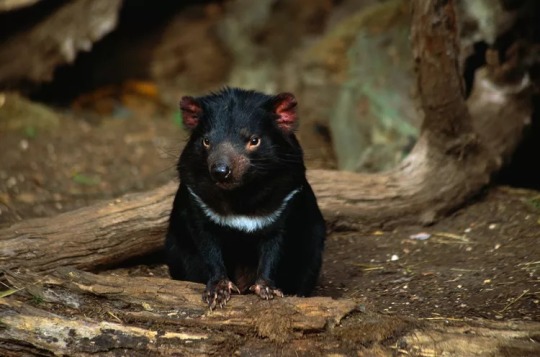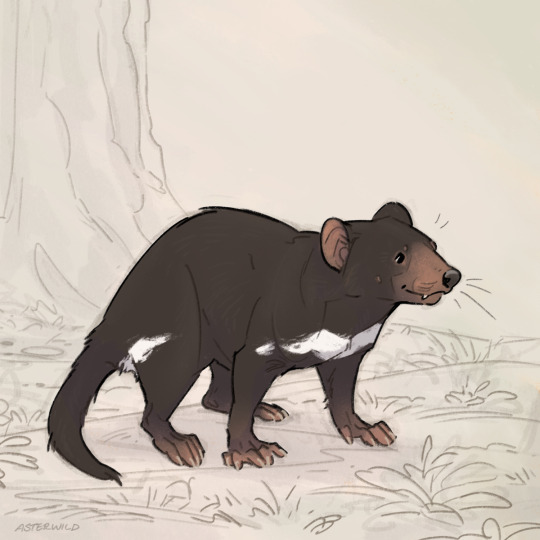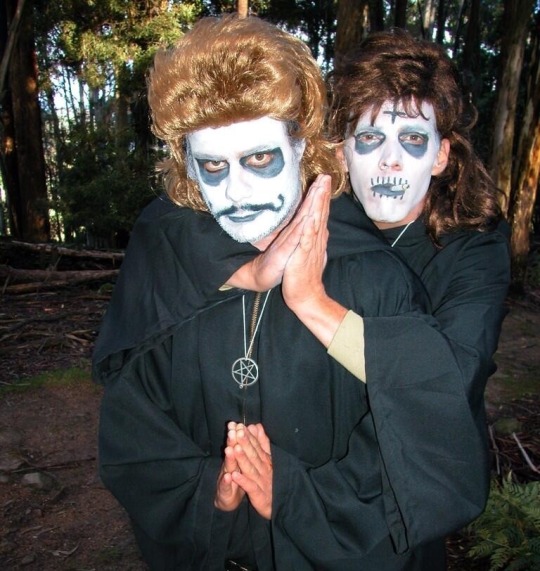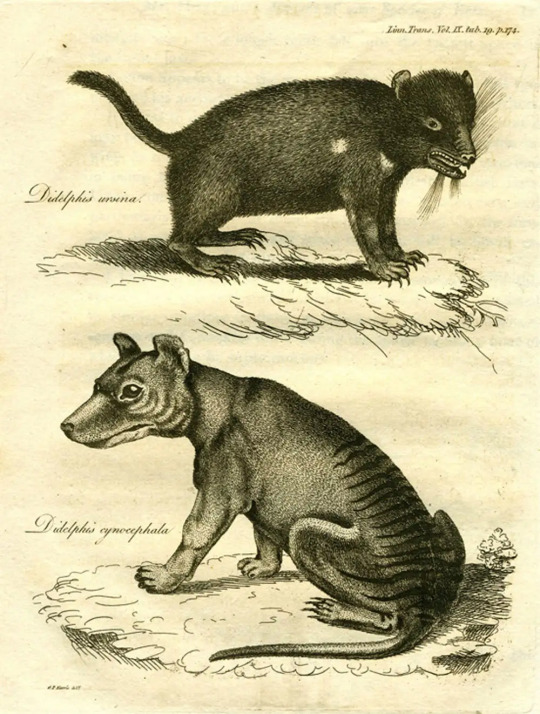#Sarcophilus
Text

Mclovin, a Tasmanian devil (Sarcophilus harrisii) housed at the San Diego Zoo
by San Diego Zoo Wildlife Alliance
#tasmanian devil#marsupials#sarcophilus harrisii#sarcophilus#dasyuridae#dasyurmorphia#marsupialia#mammalia#chordata#captive animal#san diego zoo
724 notes
·
View notes
Text
Gay teens having sex sauna first time I told him that could be
Asian Ember Snow showcases big cock riding to teen stepsis
Naked girl with outstanding ass enjoys serious hardcore fuck
Another cam from ShowmeJ
Hot big cum load
femdom footslave footjob
Jhonny Jhonny
Masseuse gets horny after touching her costumers pussy
Stealing BITCH gets her mouth full
Lesbians fisting and tormenting at orgy
#dispersively#Sarcophilus#deliverability#crack#slingback#sozine#turbaned#algorithms#shard-borne#fibrochondritis#unembanked#proclerical#treaclewort#uninhabited#nonexisting#unmutable#cheerios#Angrbodha#sugar#superemphasized
0 notes
Text
Horny Officer fucks Kaseys pussy in the office
Mzboutit the ebony cock milker
Girl pissing in public
Real hot sexy teen puerto rican videos and gay biggest butt in the
Desi Bhabhi Hot Sex Video
FamilyStrokes - Creepy Stepson Sneaks Into Milf's Room To Fuck
Fudendo minha novinha gostosa gemendo muito
Putinha de estancia velha dando o cuzinho pra desconhecido
Novinho pauzudo big pinto punheta
Fat old dude gets dick sucked by blindfolded teen and bonks
#parenthesize#taking-in#swinehull#demihake#sponsible#demonish#pedalism#outsidedness#moneric#decuries#ipid#unfacetious#dispersively#Sarcophilus#deliverability#crack#slingback#sozine#turbaned#algorithms
0 notes
Photo

The Tasmanian devil (Sarcophilus harrisii) is a raccoon-sized marsupial—the world's largest carnivorous marsupial, in fact—found almost exclusively on the Australian island state of Tasmania.
Dave G. Houser / Getty Images
#dave g houser#photographer#getty images#tasmanian devil#sarcophilus harrisii#animal#mammal#wildlife#nature#marsupial#tasmania#australia
262 notes
·
View notes
Text
OH GAWD *dying sounds* ARCHIVE DID... DID YOU POST NON THYLACINE STUFF ON YOUR THYLACINE ARCHIVE ACCOUNT??!! OH OH GOD


The bottom is gonna be a button :D
#tasmanian tiger#thylacine#thylacinus#thylacinus cynocephalus#tasmanian devil#sarcophilus harrisii#art#illustration#sinisters art tag
56 notes
·
View notes
Text
Adding a stop on my roadtrip to see my absolute favorite animal species in the whole entire world will add 700 miles 😐
0 notes
Text
Transgendered (intersexual) Tasmanian Devils (Sarcophilus harrisii) have also been reported: one individual had female genitalia and internal reproductive organs, combined with a scrotum and a pouch with mammary glands on only one side.
"Biological Exuberance: Animal Homosexuality and Natural Diversity" - Bruce Bagemihl
#book quote#biological exuberance#bruce bagemihl#nonfiction#transgender#intersex#tasmanian devil#sarcophilus harrisii#reproductive organs
1 note
·
View note
Text

The Tasmanian Devil (Sarcophilus harrisii) is a small marsupial with a big reputation. They have one of the highest bite forces relative to body size of any mammal. Though they're primarily scavengers they will also hunt fresh meat, and often consume the entirety of their prey, bones and all.
Tasmanian devils are considered endangered. The biggest current threat is Devil Facial Tumor Disease, a contagious cancer first identified in 1996. Vehicular strikes, dogs, and hunting and trapping have also played a role in depleting devil populations.
Beginning in 2020, Tasmanian devil reintroduction has begun in mainland Australia, where they had been absent for over 3,000 years.
#id in alt#tasmanian devil#animal art#wildlife#endangered species#''those are real'' series#the only thing worse than my art block currently is my writing block i'm so sorry
196 notes
·
View notes
Photo

The Tasmanian devil (Sarcophilus harrisii) needs no introduction. With bone-crushing jaws, haunting vocalizations, and a feisty disposition, this critter is Earth’s largest living marsupial carnivore. Weighing up to 30 pounds (13.6 kg), the Tasmanian devil is primarily a scavenger, chomping down on just about anything it can find—even if it's rotten. Fun fact: Baby devils, which are about the size of a raisin at birth, are called imps. Photo: Steven Penton, CC BY 2.0, flickr #wildlife #australia #amazinganimals #nature https://www.instagram.com/p/Co-B7mrt09R/?igshid=NGJjMDIxMWI=
526 notes
·
View notes
Text


sarcophilus satanicus !!
30 notes
·
View notes
Text

from parasitologist mackenzie kwak: “ The burrowing flea (Uropsylla tasmanica) is the only ectoparasite species recorded from the thylacine, though only a single adult flea was ever collected (from an individual that was shot near Launceston (Tasmania) in 1879)! Fortunately, these fleas are also found on Tasmanian devils (Sarcophilus harrisii) and quolls (Dasyurus spp.) and survive to this day despite the last known thylacine dying in the Hobart zoo back in 1933. “
If we actually de-extincted the thylacine their fleas would still be waiting for them :)
392 notes
·
View notes
Text




Results from the #paleostream! Palorchestes, Sarcophilus laniarius, Madagascalites and Germanostomus.
#paleoart#sciart#prehistoric#ammonite#pachycormid#tasmanian devil#fish#australia#deep sea#paleostream#marsupial tapir#dinosaur
168 notes
·
View notes
Photo

Tasmanian Devil (Sarcophilus harrisii)
📍Devils@Cradle, wildlife sanctuary, Cradle Mountain-Lake St. Clair National Park, Tasmania.
📸 @edwardtcjames
15 notes
·
View notes
Photo

Tasmanian devil (Sarcophilus harrisii)
JurgaR / Getty Images
#jurgar#photographer#getty images#tasmanian devil#sarcophilus harrisii#mammal#animal#wildlife#tasmania#australia#marsupial#nature
100 notes
·
View notes
Text

So, it's sorta cool to be Hollywood famous and all, but on the other hand, the negative stereotypes are kind of a bummer. The spinning, the panting, ya know, mate? My question is, why can't we be the romantic lead?
Tasmanian Devil (Sarcophilus harrisii) AKA purinina
Tasmania, Australia
Status: Endangered
Threats: pushed from the mainland by humans during ancient times, currently face habitat loss and disease
11 notes
·
View notes
Text
Today is not only #MarsupialMonday, but it's also the inaugural #InternationalTasmanianDevilDay !

Here is the first published image of a Tasmanian Devil (Sarcophilus harrisii) from 1808, initially described as the "Bear Opossum," alongside the first published image of a Thylacine (Thylacinus cynocephalus), similarly described as the "Dog-Headed Opossum" or "Zebra Opossum."*** Both images are from sketches made in 1806 by George Prideaux Harris, an Assistant Surveyor in Hobart Town. Harris sent these sketches and descriptions of the two "new" animals to Joseph Banks, who presented them at a meeting of The Linnean Society of London in 1807. They were then published in 1808 in the Transactions of the Linnean Society of London Vol. IX, "Descriptions of two new Species of Didelphis from Van Diemen's Land. By G. P. Harris, Esq. Communicated by the Right Honourable Sir Joseph Banks."
Plate: Didelphis ursina and Didelphis cynocephala, tab. 19. p. 174.
***At this point, Europeans still tended to dub most marsupials they encountered as opossums, as that was the first and only marsupial they had known of before encountering all the Australasian ones. And they didn't even know what those were until post-1492, so...marsupials were still really confusing to Europeans LOL!
#animals in art#animal holiday#european art#19th century art#illustration#historical sciart#sciart#natural history art#scientific illustration#Linnean Society of London#Joseph Banks#George Prideaux Harris#Tasmanian Devil#Thylacine#Tasmanian Tiger#Australian animals#endangered species#extinct species#mammalogy#zoology#marsupial#marsupials#Marsupial Monday#Internaional Tasmanian Devil Day
10 notes
·
View notes